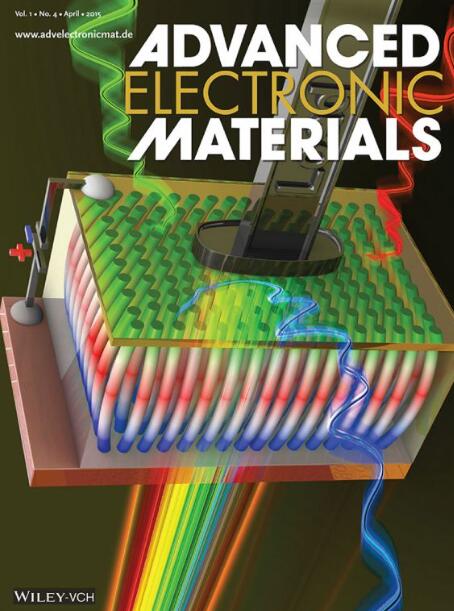ULF Multi-Key Tunable Magnetoelectric Antenna Array with Enhanced Communication Data Rate
IF 5.3
2区 材料科学
Q2 MATERIALS SCIENCE, MULTIDISCIPLINARY
引用次数: 0
Abstract
Low-frequency electromagnetic (EM) waves are essential in underwater, deep-earth, and other communication environments due to their minimal attenuation. The magnetoelectric (ME) antenna, a novel mechanical antenna, provides a promising solution for low-frequency EM wave communication, overcoming the limitations of conventional designs in terms of size and efficiency. To address the low transmission rate in low-frequency EM wave communication, this paper proposes a multi-key tunable antenna array based on an ME cantilever beam design. Each antenna array element consists of Metglas/0.7Pb(Mg1/3Nb2/3)O3–0.3PbTiO3 (PMN-PT) ME composite. Simulations identified a structure that significantly lowers the resonant frequency, allowing the ME antenna array to operate within the ultra-low frequency (ULF, 300 Hz-3000 Hz) band. Furthermore, the resonant frequency can be tuned over a range of 500 Hz, enabling multi-frequency-shift keying (MFSK) communication. Using quaternary FSK (4FSK) modulation, a 40 baud color image transmission is successfully demonstrated in a 5 S m−1 saline environment. Compared to binary FSK (2FSK) at the same baud rate, the transmission speed is increased by 100%. This approach achieves both low attenuation and high transmission rates, offering a promising new direction for ocean communications.

提高通信数据速率的ULF多键可调谐磁电天线阵列
低频电磁波由于其最小的衰减,在水下、深地和其他通信环境中是必不可少的。磁电(ME)天线是一种新型的机械天线,克服了传统设计在尺寸和效率方面的限制,为低频电磁波通信提供了一种很有前途的解决方案。针对低频电磁波通信中传输速率低的问题,提出了一种基于ME悬臂波束设计的多键可调谐天线阵列。每个天线阵列元件由metglass /0.7Pb(Mg1/3Nb2/3) O3-0.3PbTiO3 (PMN-PT) ME复合材料组成。模拟发现了一种显著降低谐振频率的结构,允许ME天线阵列在超低频率(ULF, 300 Hz-3000 Hz)频段内工作。此外,谐振频率可以在500 Hz范围内调谐,从而实现多频移键控(MFSK)通信。采用四元频移(4FSK)调制,在5 S m−1盐水环境中成功演示了40波特的彩色图像传输。与相同波特率的二进制FSK (2FSK)相比,传输速度提高了100%。该方法实现了低衰减和高传输速率,为海洋通信提供了一个有希望的新方向。
本文章由计算机程序翻译,如有差异,请以英文原文为准。
求助全文
约1分钟内获得全文
求助全文
来源期刊

Advanced Electronic Materials
NANOSCIENCE & NANOTECHNOLOGYMATERIALS SCIE-MATERIALS SCIENCE, MULTIDISCIPLINARY
CiteScore
11.00
自引率
3.20%
发文量
433
期刊介绍:
Advanced Electronic Materials is an interdisciplinary forum for peer-reviewed, high-quality, high-impact research in the fields of materials science, physics, and engineering of electronic and magnetic materials. It includes research on physics and physical properties of electronic and magnetic materials, spintronics, electronics, device physics and engineering, micro- and nano-electromechanical systems, and organic electronics, in addition to fundamental research.
 求助内容:
求助内容: 应助结果提醒方式:
应助结果提醒方式:


